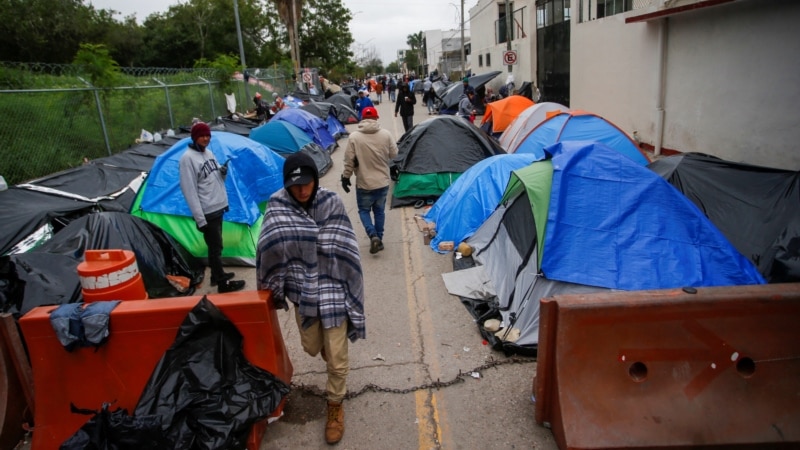The Biden administration on Tuesday asked the U.S. Supreme Court to deny a request by 19 Republican-led states to keep in place restrictions at the U.S.-Mexico border that have been used to prevent hundreds of thousands of migrants from seeking asylum.
But the administration also asked for an extra week before the guideline, commonly known as Title 42, is lifted to allow for an “orderly transition to Title 8 operations.”
“The government recognizes that the end of the Title 42 orders will likely lead to disruption and a temporary increase in unlawful border crossings,” reads one court document. “The government in no way seeks to minimize the seriousness of that problem. But the solution to that immigration problem cannot be to extend indefinitely a public-health measure that all now acknowledge has outlived its public-health justification.”
The administration also said the government is prepared to rely on the immigration law that has been approved by Congress known as Title 8 — the immigration authority that has always been in place throughout the history of U.S. Customs and Border Protection.
Under Title 8, those arriving at the border without documents or trying to enter between ports of entry can be removed without their case being decided by an immigration court. However, if a migrant wants to claim asylum, they are interviewed by an asylum officer before removal or deportation.
Federal law allows people from other countries to seek asylum in the United States if they fear persecution at home. They must be present in the U.S. and prove a fear of persecution on one of five grounds: race, religion, nationality, political opinion, or membership in a particular social class, the vaguest of the five categories, which can include grounds such as sexuality or caste.
The U.S. Supreme Court had set a Tuesday afternoon deadline for responses to its order, leaving Title 42 restrictions in place at the U.S.-Mexico border.
Title 42 was put in place under former President Donald Trump at the start of the coronavirus pandemic. The U.S. Centers for Disease Control said the measures are no longer necessary to protect public health, and President Joe Biden’s administration has said it wants to end the policy.
A federal judge had set December 21 as the end date for Title 42. Still, a group of 19 states with Republican attorneys general challenged that ruling, arguing that ending Title 42 would cause “irreparable harm” since they were expected to spend resources on law enforcement, education, and other services to assist newly arrived migrants.
The White House has sought $3 billion in extra funding for personnel, technology, and holding facilities.
White House press secretary Karine Jean-Pierre said Monday that lifting the restrictions “does not mean the border is open.”
Happening at the border now
Oscar Leeser, the mayor of El Paso, Texas, told VOA the city has been under a state of emergency since last week as officials there expect an increase in asylum-seekers at the border.
“What we’re doing here is preparing. We made the emergency declaration on Saturday to be ready so that everyone who comes to the city of El Paso will be treated with respect,” Leeser said in Spanish.
El Paso officials told VOA that even if Title 42 is lifted, they will move forward with their emergency declaration contingency plan. They say the additional funding will help them provide shelter for migrants before they travel to their final destinations in the United States.
As migrants are lining up to present themselves to a border patrol officer, El Paso’s mayor said he expects 20,000 more migrants to arrive and attempt entry to the United States through El Paso over the next several days.
Cesar Contreras contributed to this report.

